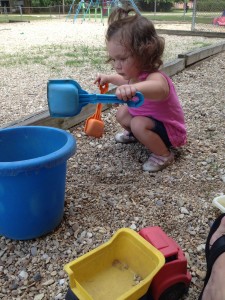My 10 month old loves to drum on everything. If he gets a hold of any object that resembles a stick, he will bang it against the ground, a chair, or even my head. He dances to music and he even sings a note or two with his eyebrows raised as if he is trying to hold the note as long as he can. There is so much brain research that links music and movement to better storing and recalling of information. And it is amazing how the love of music is ingrained in children, from the time they are born!
So, today we are going to talk about a simple activity that falls on the 3rd step of the reading ladder….Syllables.
Compound words are the easiest syllables to hear so we should start there: like foot-ball (football), ice-cream, space-ship, and other fun words to break apart and put together.
Then, there are short 2 and 3 syllable words like “prin-cess, ti-ger, di-no-saur.”
Finally, there are longer words that have more syllables and can be harder to stay on track when you are clapping or tapping these 4+ syllable words: “cat-er-pill-er,” “cin-der-el-la,” etc.
So, all that being said, this is going to help your little one start the process of hearing parts of words and playing with words which is going to pave the way and help your little reader develop an awarenss of sounds which will eventually help them sound-out words….are you with me?!?
 When I teach this I find two stick-like objects I can click together (spoons, chopsticks, drumsticks, or in the picture the student is holding wooden dowels I bought for Super-cheap at lowe’s). Then I start by letting my little one play with them because otherwise they will never pay attention. So at first I give about 5 minutes of chaotic free play (with safety boundaries of course). Then, I say I am going to tap my sticks together to hear all the words in the word “ice cream.” I tap during the word ice and cream and then say ooohhh- listen again and tell me how many words you hear in the word ice cream. Hopefully they hear 2 haha unless counting is something that you really need to start working on 🙂
When I teach this I find two stick-like objects I can click together (spoons, chopsticks, drumsticks, or in the picture the student is holding wooden dowels I bought for Super-cheap at lowe’s). Then I start by letting my little one play with them because otherwise they will never pay attention. So at first I give about 5 minutes of chaotic free play (with safety boundaries of course). Then, I say I am going to tap my sticks together to hear all the words in the word “ice cream.” I tap during the word ice and cream and then say ooohhh- listen again and tell me how many words you hear in the word ice cream. Hopefully they hear 2 haha unless counting is something that you really need to start working on 🙂
Then I will do this same thing a few more times with compound words, letting them tap with me. I repeat this little activity with “how many parts are in your name?” Then mommy’s name, daddy’s, etc. And keep going until your little one is ready to move on to something else 🙂
Have fun!

I love playing with rhythm sticks! I also used this as a listening activity “I Play, You Play.” I would tap my sticks, :”tap…tap…pause…tap,” then have my students repeat. Then my rhythms would get more complex. Listening is a cognitive skill that needs honed through listening exercises like this.
I also used these to teach auditory patterns. Instead of my students always using shapes or beads to make visual patterns, we would use different rhythms to make sound patterns (ex. “tap tap pause tap. tap tap pause tap. tap tap pause tap.”) This helps reach students who learn better through listening (auditory) and or moving (kinesthetic) as opposed to visual learners who learn best through seeing.
I couldn’t agree more…that is a great activity for rhythm sticks. Thanks for sharing!